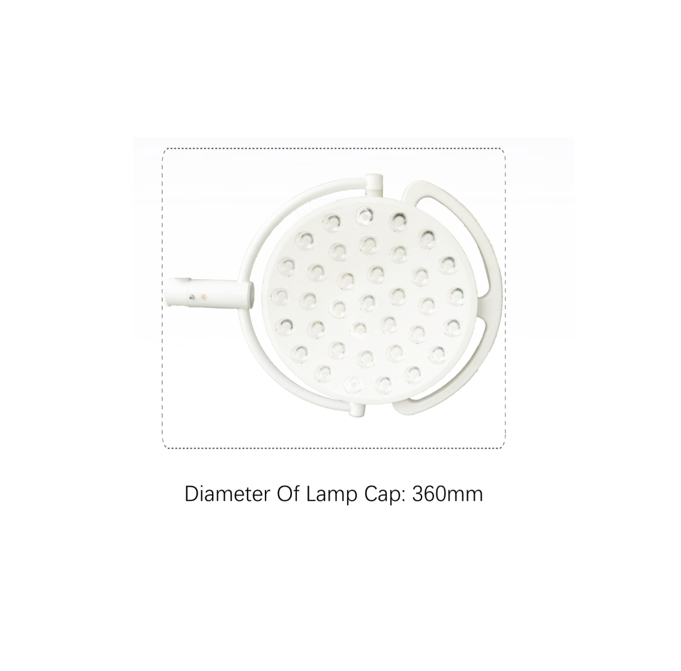- All
- Product Name
- Product Keyword
- Product Model
- Product Summary
- Product Description
- Multi Field Search
Views: 0 Author: Site Editor Publish Time: 2025-04-23 Origin: Site









Surgery is all about precision. Surgeons need clear visibility to perform their work accurately. But what happens when lighting creates shadows that obscure the surgical field? Shadowless lights are the solution. These lights provide even, shadow-free illumination, allowing for better control and more accurate surgical procedures.
In this article, we’ll explore why shadowless surgical lights are essential for successful surgeries. You’ll learn about their benefits, how they work, and the impact they have on the outcomes of surgeries. We’ll also discuss why they are increasingly vital in both human and veterinary surgical lights.
Traditional surgical lights often create shadows, especially when a surgeon or instrument blocks the light. These shadows can hide crucial structures such as blood vessels or nerves, making it difficult to perform precise actions. Shadowless surgical lights eliminate these obstacles. By using multiple light sources and reflectors, they ensure that the light is evenly spread across the entire surgical field.
This innovative lighting technology is vital for improving visibility, helping surgeons make more accurate cuts, and reducing the risk of errors.
Surgeons need a clear view of the surgical field. Shadows can distort the perception of depth and details. Shadowless lights provide clear, bright illumination, making it easier for surgeons to see anatomical structures. This clarity is critical during complex surgeries like neurosurgery or ophthalmic surgery, where precision is paramount.
With better visibility, shadowless surgical lights help prevent mistakes that could harm patients. The risk of cutting the wrong tissue or damaging nerves is significantly lower. Furthermore, these lights make it easier to spot potential issues during surgery, which can improve the overall safety of the procedure.
Surgeons often work long hours, and shadowless lights reduce the strain on their eyes. Uneven lighting can cause eye fatigue, especially during lengthy procedures. With consistent, even lighting, surgeons can stay focused for longer periods, leading to better performance.
By improving precision and reducing the risk of errors, shadowless surgical lights lead to quicker, safer surgeries. This means less time under anesthesia for patients and faster recovery. Ultimately, better lighting contributes to a higher success rate for surgical procedures.

Shadowless lights use multiple light sources and a special reflector system. The light is projected from various angles, ensuring no shadows are cast on the surgical site. This allows the surgeon to have a clear, unobstructed view. Modern LED surgical lights are especially effective because they generate less heat compared to older technologies, like halogen lights, making the operating room more comfortable for everyone.
The key to shadowless lighting is using multiple light sources arranged strategically. These lights are often adjustable, so surgeons can change their focus and intensity as needed. They also use reflectors and special bulbs to ensure that the light is spread evenly.
For example, LED surgical lights are highly efficient and have a long lifespan. They produce less heat and provide a high color rendering index (CRI), which helps the surgeon see tissues and blood accurately. This makes surgeries more precise and safer.
In the past, surgeons had to work with uneven lighting, which affected their ability to see clearly. Today, shadowless surgical lights have transformed surgery by providing optimal lighting for every procedure. These lights eliminate shadows, enhance depth perception, and provide the necessary clarity for successful surgeries.
Shadowless lighting is now used in all types of surgeries, from routine procedures to highly complex operations. It is equally essential in veterinary surgical lights, where precision is just as critical.
| Feature | Shadowless Surgical Lights | Traditional Surgical Lights |
|---|---|---|
| Shadow Elimination | Excellent (no visible shadows) | Limited (some shadows may appear) |
| Color Rendering Index (CRI) | High (90+) | Lower (70-80) |
| Depth Illumination | Clear and deep illumination | Limited illumination in deep areas |
| Surgeon Comfort | Reduced eye strain and fatigue | More strain due to uneven lighting |
| Patient Outcomes | Improved with fewer complications | Higher risk of errors |
Shadowless surgical lights have revolutionized modern surgery. They provide optimal lighting conditions that improve surgical precision, enhance surgeon comfort, and ultimately lead to better patient outcomes. As technology continues to evolve, shadowless lighting will remain an essential component in operating rooms worldwide.
At Paixie Packaging, we understand the importance of precision in every field, from healthcare to manufacturing. Just as shadowless lights are crucial for surgeries, having reliable, high-quality products for packaging is essential for your business. Visit us for more information and learn how we can meet your needs with precision-engineered packaging solutions.
Q: What are shadowless surgical lights?
A: Shadowless surgical lights are designed to eliminate shadows in the operating room by using multiple light sources, ensuring clear and uniform illumination of the surgical field.
Q: How bright are surgical lights?
A: Surgical lights can reach brightness levels of up to 100,000 lux, providing optimal lighting for precise procedures. The brightness can be adjusted based on the needs of the surgery.
Q: Are surgical lights sterile?
A: Yes, surgical lights are designed to be sterile, with components that can be disinfected. This ensures the safety of patients during surgery and minimizes the risk of infection.
Q: What temperature is the surgical light?
A: Modern surgical lights, especially LED models, generate minimal heat, making them more comfortable for both the surgical team and the patient. They typically maintain a safe temperature even during long surgeries.
Q: Who invented surgical lights?
A: Surgical lights were invented in the early 20th century. Since then, they have undergone significant improvements, particularly with the introduction of LED surgical lights, which provide better lighting and are more energy-efficient.